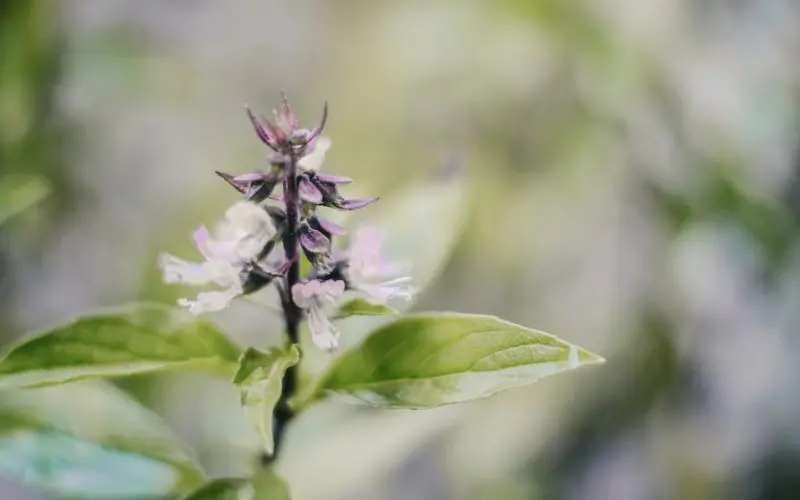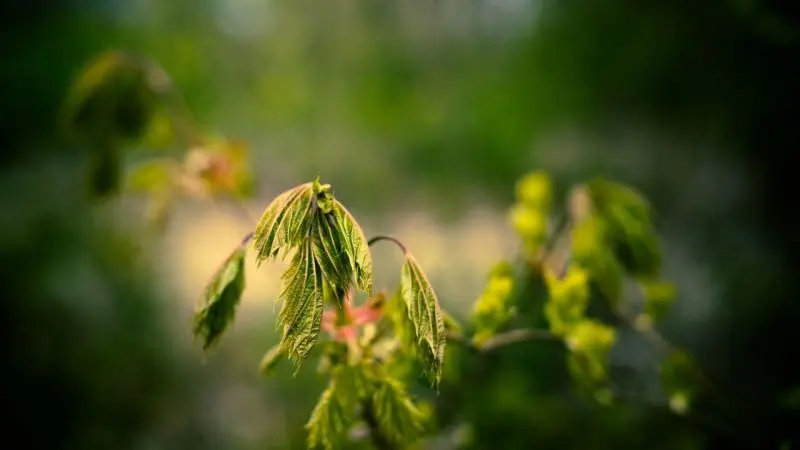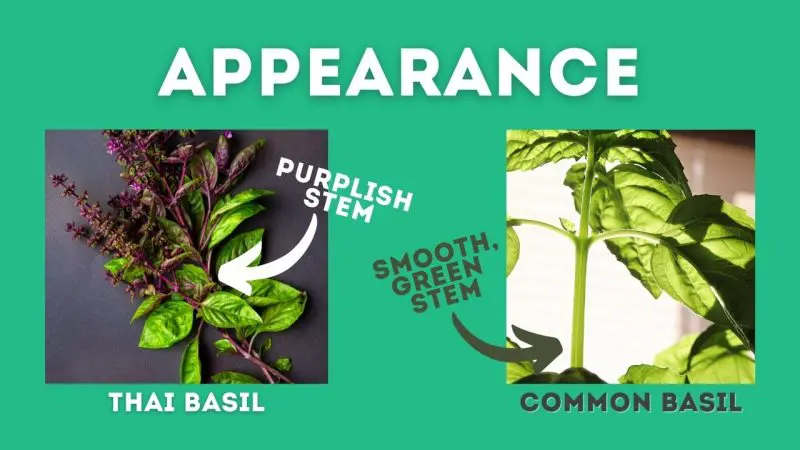Growing Thai basil is an easy, low-maintenance way to add a little variety and flavor to your cooking. While “regular” basil is delicious, Thai basil is a great alternative though it’s more commonly known for its medicinal purposes.
What You’ll Need
Thai Basil Seeds or Cuttings
You can pick up Thai basil seeds through a bunch of online stores or your local garden center. If you have cuttings from Thai basil, you can propagate basil from those as well.
A Quality Pot or Planter
Choosing the right pot is essential to getting a good harvest out of your basil. You’ll want something large enough that the roots will have room to grow. You also want to make sure your pot has a good amount of drainage holes so the basil isn’t sitting in excess moisture when you water it.
Basil seeds germinate best between 70-80 degrees Fahrenheit. Anything cooler and your seeds will either not germinate, or they will take quite a bit longer than normal to do so.
Quality Potting Soil
Basil needs well-drained soil to grow properly, so you’re going to want to choose a potting mix that includes some perlite or vermiculite to help with drainage.
Here are some great seed starting mixes that will work well.
A Light Source
It’s important that your Thai basil gets enough sunlight. Plants need a lot of light to get started and continue growing. While some might be able to use the age-old concept of growing herbs in your south-facing window, it’s more challenging than that.
Most windows won’t get a full 8 hours of direct sunlight, so more often than not you’ll need some kind of supplemental light source. If the plant isn’t receiving this amount then it will start looking small and sad (and be less tasty!).
A Heat Source
For seeds to germinate well, you’ll want to keep them in an area that is consistently 70 degrees and up. A heat mat will help with the germination process, but you’ll want to make sure to remove the plant from the heat mat once you seed a sprout forming above the soil surface.
How to Grow Thai Basil Indoors
It is pretty simple to grow indoor Thai basil. You just put seeds in a pot and water them right? Well, yes and no.
With basil, the important part is management and caring for the plant. Pruning is critical to getting a larger harvest, so make sure you don’t skip that process.
The steps for planting Thai basil vary based on whether you’re growing it from seeds or cuttings, or if you’re growing it indoors vs in the ground. But most of the steps are the same.
1. Get Your Pot
Find a pot with good drainage holes. It should be at least 12 inches in diameter and deep enough for the root ball to grow inside without touching the bottom of it. You also want your container to have plenty of drainage holes so you don’t end up with waterlogged roots.
Note for Growing Outdoors: Even if you plan to transplant your basil in the ground after it’s mature, you can start seeds in a pot to be able to control the germination process and make sure it has everything it needs to get growing quickly.
2. Add Soil
Fill the pot up 3/4 of the way with a soil mix that is loamy and drains well, like organic potting soil with perlite.
I like to moisten the soil ahead of planting basil seeds so you can just spray a little water on top and not wash away the seeds when you first water the plant.
3. Plant Your Seeds
The Thai basil plant doesn’t need to be planted deep, but you should bury the seeds up to about a quarter of an inch. Make sure that they are spread out evenly and not too tightly together so there is plenty of room for growth.
4. Water Carefully But Regularly
Basil seeds are different than many other seeds because they have what’s called mucilage – which is essentially a film that holds in moisture to help them grow even more reliably.
So once you water the seeds, the coating will hold onto some of the moisture and keep the seed damp during germination. This doesn’t mean you don’t need to water it again, I just mention it so that you won’t get freaked out if you see a blueish film on your seeds.
They’re doing exactly what they’re supposed to! 🙂
You’ll want to water your basil to keep the soil moist. Check the soil with your finger and see if you feel moisture. If you do, then you can wait until the next day (or later in the day if its hot) to check it again.
If the soil is dry, you’ll want to add water to your soil.
5. Watch Your Basil Grow
When your seeds grow their first set of leaves, get ready because the plant is going to start growing FAST.
I’m often shocked by how much my basil plants grow over the course of just 24 hours.
As the basil grows, you’ll want to be sure to water the soil NOT the leaves. Adding extra moisture to the leaves can lead to fungal diseases and attract pests.
6. Pruning and Harvesting Your Basil
Pruning Thai basil is similar to pruning any other type of basil. The biggest difference is that Thai basil tends to have larger leaves.
Pruning basil helps it grow bushier instead of just being tall – which makes harvesting easier and cuts down on waste (you’re still going to get plenty from what you cut away). Regular pruning will also stimulate new growth.
When your basil starts to grow a lot of leaves, it’s time to harvest your basil. This is the exciting part! Harvest leaves from the bottom up going from large to small, as the bottom leaves are more mature. You never want to prune off more than a third of the entire plant as this might cause it to go into shock.
Harvest your basil in the morning when the plant is a little dry. If you got a good rainstorm the night before, I would wait a few hours (preferably until the next day).
7. Look for Flowers
Thai basil grows beautiful purple flowers, but seeing flowers on a basil plant is not exactly a good thing if you’re still looking to harvest leaves from it.
If you start to notice basil flowers, you can pinch those flowers off. This is the beginning of what’s called “bolting”. If you leave the flowers to grow, the plant will put its energy into producing even more flowers. While the flowers might look nice, it will stop providing the tasty leaves we all love.

The taste of the leaves also begins to turn more bitter once the flowering begins, so don’t let these guys stay on there too long or you’ll need to start another plant.
Pests to Watch Out For
When growing any type of basil, you’ll want to keep a close eye out for pests. There are a few pests that regularly impact basil, so getting ahead of their spread is going to help you out a lot.
Aphids
I call aphids the glitter of the gardening world – they’re near impossible to get rid of because they multiply so quickly, and they’re super tiny, so you will have a hard time finding them.
Your best bet to catch them early is to check the back of your basil leaves. This is where they lay eggs and where the larvae will hide.
How to Get Rid of Aphids
If you do find aphids or aphid eggs on your plant, you’ll want to get rid of aphids ASAP. They spread like wildfire and cause a lot of damage if left unchecked.
Fungus Gnats
Fungus gnats are small and black, but they multiply like crazy. If you’ve ever tried to grow a houseplant, you’ve probably encountered these.
Fungus gnats are attracted to moist soil and generally are found indoors when starting seeds or growing plants inside.
How to Get Rid of Fungus Gnats
My favorite method for getting rid of fungus gnats is using yellow sticky traps. These yellow traps are AMAZING for capturing a lot of gnats.
Problems to Watch Out For
Pests aren’t the only things to watch out for. When growing Thai basil indoors, you’ll need to make sure the environment is optimal. Thai Basil prefers around 6-8 hours of direct sunlight each day, and usually, a windowsill won’t offer that much full sun.
You may have to supplement with some artificial light like a grow light.
Wilting Basil
If your basil plant is wilting, it generally means you need to water it and the soil is far too dry. Go ahead and add water to your basil, because she is thirsty!

Sometimes you’ll encounter a situation where the top soil feels wet, but the soil where the roots are is bone dry.
Dig your finger into the soil and feel the bottom, if it is dry, you want to saturate the soil completely with water. It may take a time or two but once the top layer is fully wet, the water will start making its way down to the roots, which is what you want.
Differences Between Thai Basil and Regular Basil
Fresh Thai basil is quite different from the “regular” or sweet basil you’d buy at the grocery store.
For the most part, Thai basil is a very close cousin of regular sweet basil. However, there are some differences that make it worth growing and using in your cooking!

Thai Basil
- Thai basil flavor tastes more like anise or mint than traditional basil. Some even call it a licorice flavor
- Unique purple hue on the leaves when grown in partial shade
- Densely clustered dark green or purple stems with pretty pink flowers that smell amazing!
Sweet Basil
- Has a milder flavor than Thai basil (some say similar to licorice)
- Leaves are typically lighter and greener than those found on Thai basil plants
- Stems can be slender as opposed to thick, dense clusters of spiky hairs
Both Thai Basil and sweet basil can be used in cooking, and make great additions to a lot of recipes. Just keep in mind the differences in flavor when adding it to your dishes.
Because of its pungent smell, thai basil varieties are often used in essential oils and potpurris.
Not only is Thai basil different from “regular” basil, but a lot of people confuse it with Holy basil as well. The two are actually not the same breed.
Common Uses for Thai Basil
Thai basil is a commonly used herb in Thai recipes, and many people who have tried these dishes cannot live without it. However, there are other uses for this plant that can be beneficial to your home herb garden as well.
Some people use Thai basil in tinctures or oils to help with the relief of common ailments like headaches or insomnia. Others use the leaves directly on wounds or bruises because they believe it speeds up healing time and reduces pain associated with inflammation.
Does Thai Basil Come Back Every Year?
Thai basil is generally considered an annual, so it will not grow back each year. However, you can bring your Thai basil indoors during the winter, and with the proper pruning and plant care, it will survive if the conditions are right.
If you have never grown this tasty herb before, I hope these tips were helpful and you grow a bountiful harvest.



